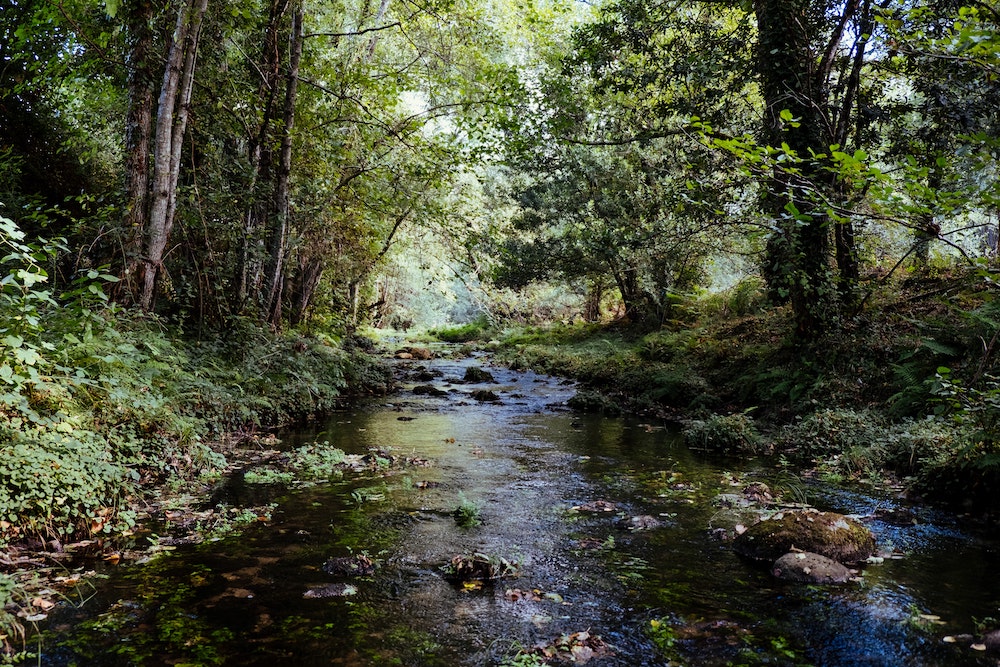Is it safe to drink this water? I ask myself that question often and most of the time the answer is no. There often is the risk that bacteria, chemicals, and pathogens, specifically Giardia, are in the water. Rainwater or dew that is resting on non-poisonous plants such as moss is safe to drink as is. There are a few ways to process water to make it safe to drink: boiling it, using chemical purifiers, and filtration. This article will provide tips on how to make and use a survival water filter.
What Does a Survival Water Filter Do?
Passing water through a filter will make the water safe to drink. High-quality water filters from a store will ensure that no harmful pathogens or microorganisms are getting into your drinking water. But sometimes using store-bought, high-quality water filters might not be an option. Few people carry one of these around with them all the time. Also, the problem with store-bought water filters is they need to be cleaned, or the filter needs to be replaced fairly often. And you must remember to carry it when you’re out exploring.
Filtering Water with What You Have
The basic process of filtering water in a survival situation is to remove debris such as soil, dirt, sediment, sticks, leaves, and any animals living in the water. To create a survival water filter you will need to gather various materials such as pebbles, sand, cloth, and charcoal. If you realize you are in a survival situation, take some time to think about what needs to be done. Figure out what you have with you and how it can be used to your advantage. Most people who are lost are found within 24 hours. So don’t freak out! Keep in mind that it is not possible to filter saltwater into drinkable freshwater—regardless of the kinds of water filters you have.
Making a Basic Survival Water Filter From Scratch
The first thing to consider when collecting water is to think about how soon you will need to drink. If you have time, collect standing water in a container and let it sit for a few hours. This will allow anything that floats to rise to the surface, and you can skim off any debris.
If you have two containers, try this method for filtering water: Take the first container and fill it with water. Then, put your shirt or some sort of porous layer over the other container. Put your pebbles on top of the cloth and filter your water by pouring it over the stones and into the container. Next, remove the pebbles and put sand, a finer material, on top of the cloth. Filter your water again.
Finally, the most effective way to filter is to crush up charcoal, put it on your cloth and let the water run through it. Charcoal filters remove sediment, many contaminants, and improve the taste. Charcoal is used in store-bought home and backcountry water filters. You can make your own charcoal by making a campfire, covering it with dirt and ash, and allow it to cool completely. Once it has cooled, crush it into small pieces. Pour the water through the charcoal several times.
If at all possible, build a contraption that will combine all three filtering steps, letting the water flow from one material to another. This will make the water gradually clearer as you filter it again and again.
If you don’t have a manmade container, some natural materials are great alternatives. Bamboo is a prime example. It is hollow in the center and water can flow through it easily. There are many other plants with hollow centers. Use these to your advantage. A hollow log can be a great option. Place the materials (pebbles, sand, cloth, and charcoal) in layers through the various parts of the bamboo or log. Remember to think about what materials you are carrying and check out your surroundings in any survival situation.
This should provide you with a basic insight on how to create a survival water filter. Realize that it is still possible to get sick, even if you follow the guidelines in this article. Always contact a physician after you drink questionable water. The side effects of pathogens and microorganisms will take at least a week to start affecting you. If you are in a survival situation, keep hydrated, and worry about those side effects later.
Sources:
When All Hell Breaks Loose – Stuff You Need to Survive When Disaster Strikes, by Cody Lundin
Survive, by Les Stroud
Water Purification: Improvised Charcoal Filter, as featured in the May/June 2010 issue of Practically Seeking
